With its shiny robots, samurais, mythological beasts, and towering mountains, backpacking in Japan is truly fascinating. Snow-capped peaks and towering volcanic summits cover 70% of Japan’s landscape.
These mountains have an important cultural and religious significance and are a haven for budding adventure fanatics.
Backpacking in Japan is a fantastic experience; you won’t get easily frustrated or feel threatened. The only challenge you’ll face is spending your money wisely, as Japan is an expensive country to travel to.
The least you can spend is $30 daily; several traveling hacks can help you experience the country cost-effectively.
This article will guide you on how to travel to Japan on a budget and the sites that should be on your travel bucket list to ensure you have a fantastic time.
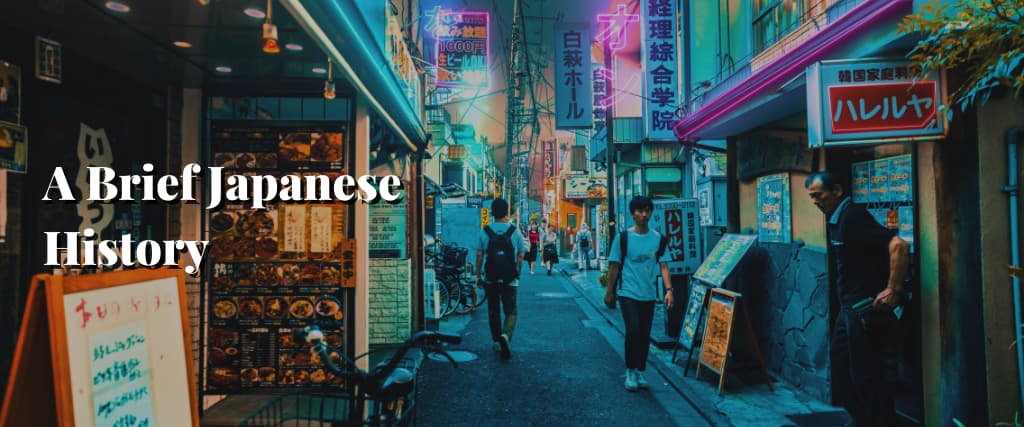
A Brief Japanese History
China and Japan have had a long war history; in 1931, to invade Northern China, Japan bombed Manchuria.
This invasion peaked during the Nanking massacre and was opposed by western powers, including the United States, due to its economic implications. During the second world war, Japan allied with Germany since its government was structured around Imperialism.
Japan seized pacific colonies like Malaysia and the Philippines, which they were forced to surrender after the second world war due to the nuclear atomic bombings.
The Nagasaki and Hiroshima nuclear bombings were the most significant and saddest turning points in Japan’s history.
The relationship between the United States and Japan was restored in 1951 following the signing of the San Francisco Peace treaty. Japan is among the most economically and culturally vital countries globally.
Reasons To Backpack In Japan
Japan is one of Asia’s most popular travel destinations due to the country’s wealth of things to see and do. For backpackers and budget travelers, there’s cheap accommodation, excellent cuisine to sample, and unique traditions to experience.
Japan’s landscape is a blend of feudal and bustling modern scenes, making it an ideal travel destination. Each area you tour in the country is unique yet still distinctly Japanese.
Japan’s cities are unrivaled; they pop and crackle with energy. Tokyo, Japan’s capital, is a futuristic wonderworld of bright lights, soaring buildings, and gliding transport.
Several kilometers from Tokyo is Kyoto, an ancient city and Japan’s first capital, Nara. Temples lie hidden in bamboo forests, and Geishas still flock to the streets in their traditional dresses.
In the South, you’ll find Okinawa, a tropical haven with white sandy beaches, while Sapporo and other ski resort towns are in the North of the main island.
Since Japan has many National Parks, you’re bound to encounter sparkling lakes, craggy mountains, and dense parks during the trip. Besides the various biodiversities and landscapes, people also tour Japan to experience the culture.
Travel Itineraries For Backpacking In Japan
There’s so much you can do while visiting Japan. In fact, you can spend months or weeks exploring Tokyo, and you’ll barely have scratched the surface of what the country has to offer.
If you have the money and time, spend extra time exploring Kyoto and Tokyo. If you need more time, here are some travel itineraries that will give you great exposure:
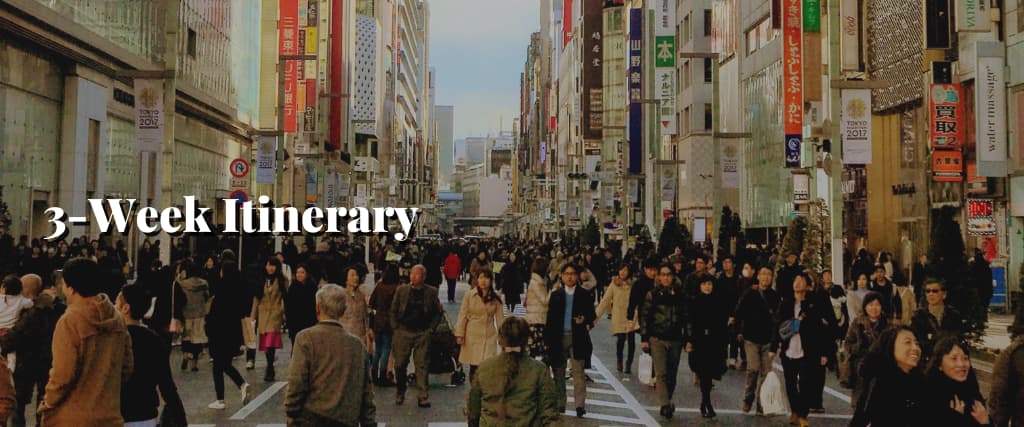
3-Week Itinerary
This is the ideal itinerary for individuals who intend to explore Japan for 2 to 4 weeks. Kick off your adventure by exploring Tokyo. Ensure you stay in Tokyo for at least five days, as it’s an expansive city.
Use the Odakyu express train, which takes you to Odawara, where you can view the iconic Mt Fuji. Ensure you book your trip on a clear day to ensure you view the stunning mountain views. To save cash, purchase the Hakone Freepass and combine it with your regular ticket fare.
Next, hop on a train to Shinjuku and take a bus to Matsumoto, a city famous for its 16th-century castle, the Crow Castle (castle Matsumoto).
After touring the castle, head to the Japanese Alps, where you’ll experience the best skiing in the world; nevertheless, you can only experience this during the winter. The Alps offer excellent kayaking, mountain biking, canyoning, and hiking experiences during the summer.
Next, head to Takayama and Shirakawa. Shirakawa is a remote town located in the mountains, and it’s a UNESCO heritage site famed for its gassho-zukuri farmhouses, some of which are over 250 years old.
To finish the trip, head over to Kyoto and Osaka, two neighboring cities that offer different vibes. Osaka offers a laidback Japanese vibe, less-reserved people, quirky dialects, and eccentric nightlife.
2-Week Itinerary
This itinerary also starts by exploring Tokyo, after which you head to Kyoto, Japan’s ancient capital.
Next, head to Nara, a city with a rich history and Japan’s initial permanent capital. Nara is home to some of the oldest and largest temples in the country, such as Todai-Ji (the biggest wooden building worldwide).
As you tour the city, you may encounter deers who roam freely within the city. The next city in your itinerary is Hiroshima, which was largely destroyed after an atomic bombing in World War II.
Nevertheless, the city has been rebuilt and has various sites you can explore, like the Hiroshima Peace Memorial Park, Hiroshima Castle, and the Hiroshima Atomic Bomb Museum.
You’ll only require two to three days to explore Hiroshima; however, ensure you visit Miyajima during this period.
If you have more time, fly out to Okinawa island, famed for its fantastic scope of activities, from hiking and year-round sandy beaches to its rich culture and iconic festivals.
Where To Visit During Your Trip
You can’t go wrong regardless of where you decide to visit while backpacking in Japan. A stroll down any road in the country is guaranteed to offer a tasty snack or stunning views.
That said, there are places you wouldn’t want to miss during your trip. These places include:

1. Tokyo
Exploring Tokyo should be the first thing on your to-do list, as there’s a lot you can do in this city. To get the best experience, ensure you have a Japanese friend to show you around.
Whether you plan to spend a weekend or longer, plan your time well, as the city has a lot to offer. If you’re backpacking on a budget, you can look for a Couchsurfing host to help you get the most out of the city.
Ensure you visit Studio Ghibli while exploring Tokyo, even if you aren’t an Anime fan. A visit to this studio needs to be booked in advance; fortunately, you can book from a machine in any convenience store.
You should also visit the Tsukiji market, the largest fish market globally; that said, you should ensure you get there early. For a chance to get a 360-degree view of Tokyo and a glimpse of Mount Fuji, get a ticket for the Tokyo SkyTree.
As you tour Tokyo, ensure you try out the food since, in Japan, food culture is a level up; it’s decorative, balanced, and delicate. Every dish is a work of art; research to learn the proper dining etiquette and find out what you’d like to try.
Even though not as impressive, the Kodokan (the biggest Dojo globally) is worth a visit. If you’re in Tokyo during the winter, check out the Marunouchi illumination, where Nakadori, a cobblestone street, is lit up.
You can visit various palaces and temples, but most charge entrance fees. Wait until you visit Kyoto, as it has the most impressive temples. Tokyo offers a great nightlife experience and a safe city to let loose.
The city also has fun parks, and you can wander around Harajuku to see the infamous Harajuku girls. There are many awesome day trips you can take from Tokyo.
For a chance to visit many incredible places, you should stay in the Shinjuku area as it’s close to Shinjuku station, which goes to various amazing places.
The range of available accommodation options makes Tokyo one of the most amazing places to visit. You can sleep in guesthouses or traditional ryokans with tatami mats and rooms with multiple uses or in capsule hotels or sleep pods.

2. Kyoto
Kyoto is a beautiful ancient city famous for its numerous ancient sculptures, such as imperial palaces, wooden pandolas, Shinto shrines, Buddhist temples, and museums.
The city’s scenic topography bursting with maple and cherry trees, iconic buildings, and cuisine make it a must-visit. Kyoto offers travelers an irresistible blend of modern and ancient infrastructure; whether you love nature, art, culture, or history, it has something for everyone.
The Higashiyama district is the best place to visit Kyoto, renowned for its many historic and beautiful temples. Several major Kyoto attractions are located within walking distance.
The Kiyomizu Dera is a must-see site when visiting Kyoto. The picturesque temple was founded in 778 AD and is a UNESCO heritage site. Other UNESCO world heritage sites in Kyoto are the Shimogamo shrine and Nijo castle.
The Shimogamo shrine is among the most beautiful Shinto shrines, and it was built in the 6th century while the Nijo castle was home to Ieyasu, the first Tokugawa Shogun.
Visit the Kyoto tower to get fabulous sunset views or panoramic city views. There are telescopes in the building that allow you to see incredible city views.
If you’re a foodie, visiting Pontocho is a must, as you’ll find the best places to sample Japanese cuisine. The area is lined with restaurants that offer various Japanese foods, from snack foods to fine dining experiences.
A visit to Kyoto is only complete with exploring the Imperial palace, the former residence of Japanese emperors. Touring the Imperial Palace will allow you to learn about Japan’s history and soak in its gorgeous interiors and ornate detailing.
If you’d like to immerse yourself in nature, the Sagano bamboo forest is a must-see site. Ensure you have a camera to capture the scenic views.
3. Osaka
Osaka is Japan’s largest port city and commercial center, surrounded by cherry blossoms, plum, and peach trees, making it a fantastic spring travel destination. It has some of the best castles, unique cuisine, and great nightlife.
The best place to stay in Osaka is Umeda, which is among Osaka’s tourist areas and has numerous attractions, dining and leisure options, and a great nightlife experience. While in Umeda, you can visit the colorful Umekita garden and the observatory for stunning city views.
For a nostalgic vibe, head over to Shinsekai, a downtown district in Osaka where the streets overflow with nostalgia. There are numerous retro shops, and you’re bound to pick up unique souvenirs as you explore the streets.
If you’d like to reconnect with your inner child, visit Universal Studios, among the most famous landmarks for locals and tourists in Osaka. There are plenty of things to do here as there are nine zones, including Harry Potter’s Wizarding World, Minion Park, Amity Village, Universal Wonderland, Waterworld, and Jurassic Park.
Another must-visit place in Osaka is Dotonbori, one of Osaka’s most popular tourist destinations. There are numerous cafes and restaurants to sample, flashing lights, and shop displays.
A visit to Osaka is only complete if you check out Osaka Castle, one of Japan’s most well-known landmarks. The castle has great historical significance and offers great cherry blossom views during the cherry blossom season.
If you’d like to experience Osaka’s youth culture, head to Amemeura, where you’ll find the best restaurants and bars in the city, as well as thrift stores and boutiques.
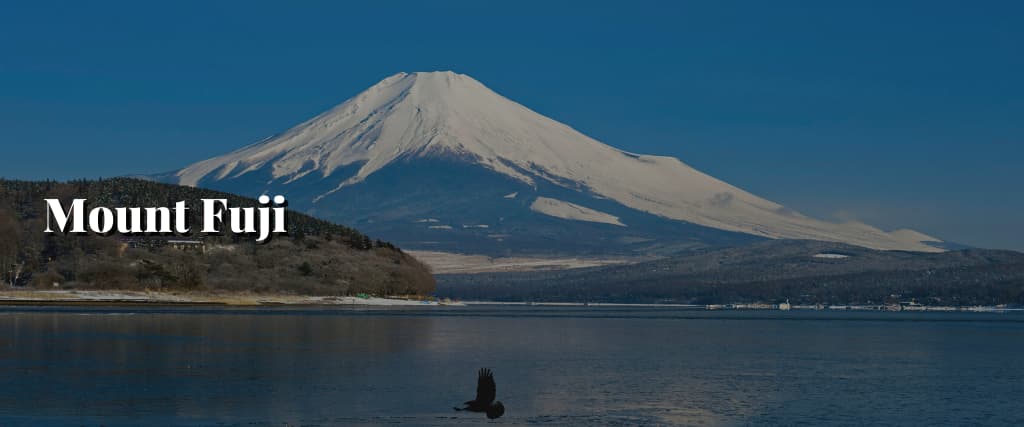
4. Mount Fuji
This is Japan’s most iconic mountain, and exploring it is on most backpackers’ bucket lists.
Mount Fuji has a 3776 m altitude; therefore, getting sick while climbing is possible.
Nevertheless, climbing Mount Fuji is easy, and anyone with a reasonable fitness level can climb it with training.
Hakone town is found within Fuji-Hakone-Izu National Park, offering picturesque views of the iconic mountain. The landscape here is alluring, and it’s also the most budget-friendly place to climb Mount Fuji.
Ensure you have enough water, warm clothes, good-quality trekking shoes, and energy bars. You should also book a hostel around Mount Fuji where you can rest before and after climbing the mountain.
It’s best to attempt this climb in the official season, between the end of July and the end of August. However, it’s the busiest time to stay in Mount Fuji, and it can get crowded.
During other times of the year, the hiking route is closed due to snow and low temperatures. Fuji is a better mountain for you if you’re searching for a quiet sunrise and to get lost in nature.
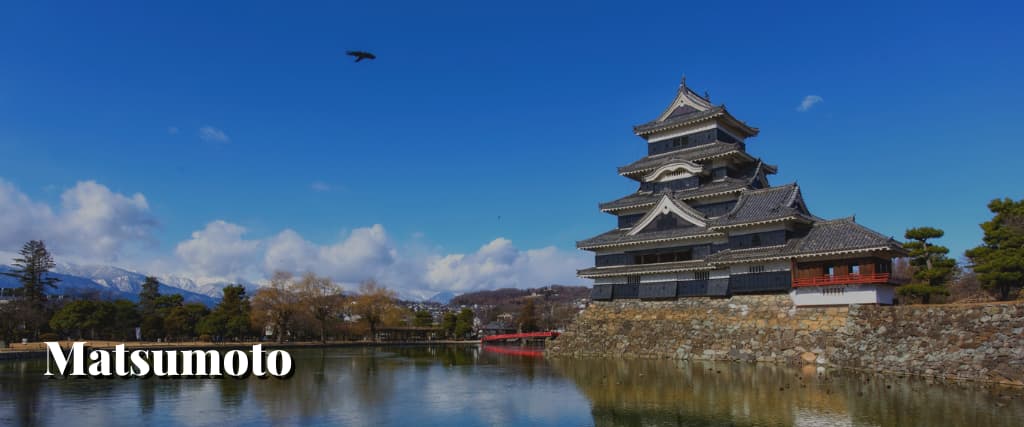
5. Matsumoto
Matsumoto is renowned for its ancient 16th-century castle, the Crow Castle or Castle Matsumoto. Explore the city, visit Nakamachi street, lined with ancient merchant houses, and the river within the town offers a nice spot to eat dinner.
You’ll need two days to explore everything within this city and as you leave, take the Matsumoto Shinano Omachi train, then head to the Alpine Kanazawa route. The Alpine route is only open between April and November.
6. Nara
When you have a free day, you should make a day trip to Nara city, Japan’s historical capital. The city boasts temples such as the Todai-Ji, lovely parks, and historic neighborhoods.

7. Hiroshima
The Hiroshima Peace Memorial Park is a must-visit site when visiting Hiroshima. The memorial park tells the story of how American forces nuked Hiroshima—previously untouched by war—at the end of World War II.
The park has an Atomic Bomb Dome where the first atomic bomb landed. There’s also a museum in the park, and it offers free WiFi and is, therefore, a great place to chill when you’re stuck.
The museum offers two free films in its small cinema and an audio tour worth every penny. The memorial park also has a library where people can use computers for free for up to an hour.
Visiting Hiroshima can be a satisfying yet distressing experience; therefore, you should read up on what happened in the area before visiting.
If you have an extra day, you take a day trip from Hiroshima to Miyajima, a beautiful island surrounded by gorgeous woods. Trek on the hills to avoid crowds, discover stunning views, and encounter deer herds.
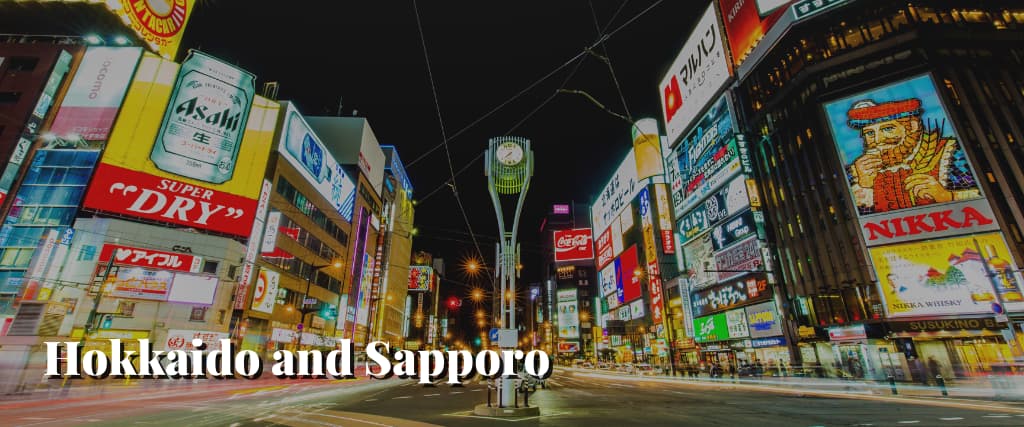
8. Hokkaido and Sapporo
Hokkaido and Sapporo don’t get as much love from backers as other major cities in Japan do. Hokkaido is a beautiful lush green wonderworld of wildflowers, mountains, and fruits.
During the winter, Hokkaido can be extremely cold; nevertheless, it’s a Narnia-like snowscape with majestic frozen lake fields. The area is sparsely populated as it has a harsh landscape.
Sapporo is Hokkaido’s capital, and while it doesn’t have many tourist attractions as other Japanese cities, it still offers great cuisines, excellent hostels, and awesome things to do. Additionally, it’s a beautiful city with forests, greenery, and mountains.
Hitchhiking to Hokkaido allows you to meet the best and quickest Japanese people.
9. Ishigakijima
This island is located 400 km south of Okinawa, and it’s famous for its clear blue waters and beautiful flowers. You’ll be surrounded by tropical fish and coral while snorkeling in these waters.
With its starry skies and peaceful waters, Ishigakijima is perfect for a romantic getaway. The island’s real magic lies beneath the ocean’s surface. You can earn a diving certificate by going on dives.
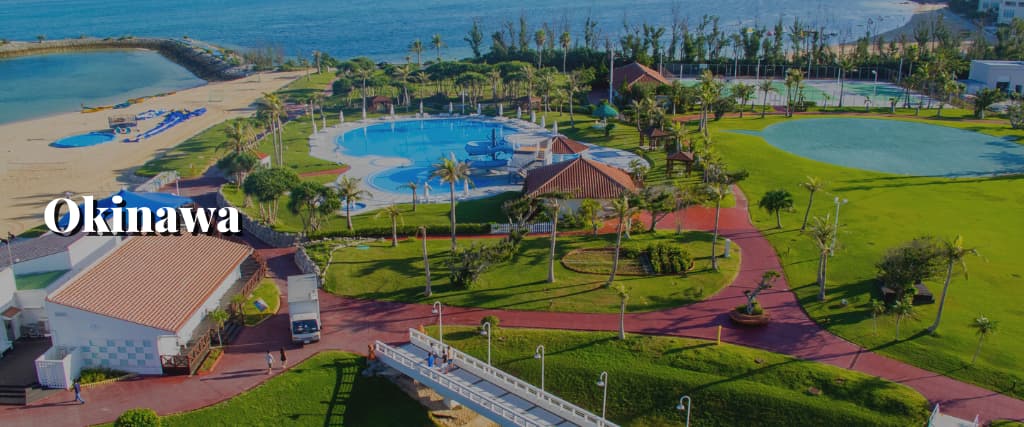
10. Okinawa
The Okinawa islands are far from Mainland Japan as they’re located between Taiwan and Japan. The islands have a temperate climate, and it has beautiful beaches. Okinawa has its vibrant music, culture, and people.
Visiting Okinawa allows you to see a different side of Japan. Besides the history, there are several fun things in Okinawa, including lounging on sandy beaches, surfing, and diving.
Activities to Do While Backpacking in Japan
Backpacking in Japan is about having unique and crazy experiences. Here are some activities you should try:
1. Seeing A Sumo Match
Sumo matches involve large men wrestling, and it’s only in Japan that you can experience something so delightfully odd.
2. Go Go-Karting
Going-karting should be on your itinerary if you’re looking for something fun yet thrilling in Tokyo.
3. Soak in Onsens
An onsen is a thermal pool unique to Japan, and it’s usually outdoors, surrounded by zen gardens and relaxing music.
4. Experience What Actual Earthquakes Feel Like
If you’d like to know what an earthquake feels like without the risks, head to the Ikebukuro Earthquake Hall. You’ll also get a chance to learn what measures to take when an actual earthquake occurs.
5. Stimulate Your Visual Senses
Experience the eccentric and colorful teamLab Borderless world, which will stimulate your visual senses.
6. Dine at a Cosplay Cafe
A cosplay is similar to a traditional restaurant, the only difference being that there are ladies dressed in maid outfits who address customers as masters.
7. Visit the Meguro Parasitological Museum
This isn’t a regular museum; it’s filled with over 300 parasite specimens and best visited well after you’ve eaten or on an empty stomach.
8. Check Out The Robot Restaurant Show
If over-the-top costumes and performances are your things, you should check out the Robot restaurant show, full of various acts and themes and two sides facing off.
9. Delight Your Taste Buds
Visiting the ramen museum in Osaka allows you to learn about the different ramen flavors and taste them.
10. Experience Samurai Warriors In Action
Tokyo’s Samurai Dinner Theatre is a must-visit for all those who love martial arts or want to see samurai in action.
The Samurai dinner isn’t a regular dinner; it’s on the Kanda Myojin sacred grounds, and you’ll get a delicious meal and unlimited drinks. Even though the show is staged, it still offers an authentic experience.
Accommodation Options While Backpacking in Japan
If you’re traveling on a budget, Couchsurfing is the best way to save on costs. Besides Couchsurfing, there are other affordable accommodation options like hostels and homestays.
Homestays are the cheapest accommodation options, and besides their affordability, you get a chance to stay with a local who can give you ideas on what to do and things to see.
Nevertheless, the hostel scene is awesome as most hostels are equipped with state-of-the-art facilities and are diverse. Some hostels even have lounges and co-working spaces. On average, hostels cost approximately $15 to $20 every night.
In hostels, you can expect to meet other travelers who you can trade travel stories with and get tips on where to go. Hostels in Japan are usually capsule style meaning your bed will face inwards rather than along the wall.
If you don’t like hostels, an Airbnb is an option, although you’ll have to part with some additional cash. On average, Airbnbs cost approximately $80 every night. If you want cheaper Airbnbs, opt for traditional guesthouses that offer an authentic experience.
Besides hostels and Airbnbs, Japan also has excellent inns and hotels.
Cost of Backpacking In Japan
Even though it’s possible to backpack in Japan on a budget, it’ll take sacrifices and well-thought-out planning. If you have an itinerary beforehand, you can book air tickets, multi-day day rail passes, and other valuable money savers.
You can backpack in Japan while spending $35 per day; however, this will mean wild camping, eating at food courts and convenience stores, visiting a few sites, and wild camping. Since transportation is the most expensive, staying put will help you reduce costs.
If you wish to splurge a little and eat sushi, attend the robot dinner show, soak in an onsen, go out at night, and visit shrines, you’ll spend roughly $75 daily.
To save money on food, consider eating pizza slices and rice balls and eating in cheap restaurants. You can also purchase bento boxes from convenience stores or eat at food courts.
Additionally, if you want to save cash exploring places, consider visiting shrines or traditional markets that are either free or have low entrance fees.
Here’s an overview of how much you can spend daily while backpacking in Japan:
| Expense | Broke Traveler | Creature of Comfort | Frugal traveler |
| Activities | $1-$10 | Over $40 | $10-$25 |
| Nightlife | $5-$10 | Over $30 | $10-$20 |
| Transport | $4-$10 | Over $50 | $10-$30 |
| Food | $6-$12 | Over $30 | $15-$25 |
| Accommodation | $10-$20 | Over $40 | $20-$30 |
| Total | $25-$60 | $185 | $64-$130 |
Japanese Currency
The Japanese currency is referred to as the yen, and while it’s not the most colorful, it has a refined elegance. ATMs are located everywhere in the country in shopping centers, banks, and convenience stores.
Nevertheless, international ATMs in Japan are pricey, so ensure you withdraw considerable sums to save on charges.
A fun fact about the Japanese 5 yen coin: it’s called go’en, which means five yen, and destiny, that’s why the five yen coin has spiritual significance. If you visit any shrine, save your go’en to make a wish at money boxes.
Tips For Visiting Japan on a Budget
Since touring Japan can be expensive, following the tips below can help you save on costs:
- Make your meals: Cooking your food while camping will help you save a fortune.
- Couchsurfing: The best way to explore Japan when you’re budget-tied is by saving on accommodation.
- Eat local: Save on costs by eating in convenience stores and food courts and sampling street foods.
- Camp: As long as you have the appropriate gear, camping can help you save on accommodation costs.
- Hitchhike: This is a great way to save on transportation costs.
- Carry a water bottle: This will help you save money as you won’t purchase overpriced water bottles in supermarkets. It also allows you to conserve the environment by reducing your plastic footprint.
When to Travel to Japan
The best time to visit Japan is between September and November and March to May. If you want to experience the cherry blossom season, visit Japan between March and May. Cherries usually blossom in spring, and the autumn leaves’ vibrant hues are stunning.
Items To Pack When Traveling To Japan
Here are six things you should never travel without the following:
- Security Belt
- Water bottle
- Microfiber Towel
- Torch
- Camping Hammock
- Toiletry Bag
How To Stay Safe During Your Trip
Japan is among the safest countries to visit worldwide as it has low crime rates. Nevertheless, you should still exercise caution as some areas, such as Kabukich, are dodgy. Be careful when roaming the streets at night, as petty crimes like phone or bag snatching occur.
Japan’s Entertainment Scene
Japan is big on pop music and alcohol, but you may have difficulty accessing marijuana. Many police officers on the streets are always looking to catch those in the wrong; therefore, you should avoid using marijuana while in Japan.
Tokyo is one of the cities with the best concert scene globally, and it has a medium size and small concert halls, commonly called live houses.
There are several genre-specific clubs, including jazz, hip-hop, and punk. If you’re in Tokyo, try checking out at least one show, even if it’s a random band performing.
On average, small shows cost between 2000 to 35000 Yen and usually feature two to four bands. Japan also hosts Fuji Rock, the coolest music festival in Asia.
The festival is renowned for its cool forest theme; if you’re in Japan around July, ensure you attend this festival. Though Japanese people are old-fashioned when it comes to relationships, people still use dating apps like Tinder. Also, it is common for a woman to ask a man out on a date.
Japan’s Entry Requirements
Most countries don’t require a Visa to visit Japan, and you’ll get a 90-day Visa upon arrival. If you reside in a country where you can’t be granted a visa on arrival, you’ll have to be invited by someone in Japan.
You’ll have to apply for the Visa in your country’s Japanese embassy and submit your invitation letter, application document, and other required documents. It usually takes five days for your application to be processed.
Transportation Available In Japan
Japan has one of the best transportation systems globally, and getting around is easy, albeit a bit expensive. That said, there are various passes for foreigners that make transportation more affordable.
The best way to save on transportation costs is by hitchhiking, even though it’s a fairly uncommon practice among the Japanese. Hitching a ride is almost impossible in most Japanese cities; however, it gets easier when you move to major cities.
Ensure you hitch a ride at a gas station or an interchange and not on expressways, as it’s illegal.
Working in Japan
Even though it’s more common for backpackers to visit Japan as tourists, some travelers opt to work in Japan. A work visa is optional, especially due to Japan’s infamous working culture.
You’ll have to jump through hoops to get a work visa in Japan, as you need to select a work Visa depending on your occupation. You also must have an eligibility certificate from a potential sponsor or employer. The work visa usually runs between one and three years.
Working as an English Teacher
This is the most common work for foreigners in Japan. With a degree and appropriate qualification (TEFL), many doors with good wages will be open to you. The wage is enough for day-to-day living, and you may have some cash to spare. Additionally, you may be given a place to stay.
English teachers usually work in schools or learning centers; however, numerous opportunities are available.
Teaching English in Japan will allow you to save money which you can use for epic adventures and immerse yourself in Japanese culture.
Volunteer Work in Japan
Besides legal work, volunteering is another opportunity you should explore. Finding volunteer work in Japan is easy; express interest and ask around, and you’ll land a place to stay and work.
Volunteering is a great way to immerse yourself in Japanese culture and help you see the real Japan. Some fantastic volunteering opportunities include playing with kids, tourism, hospitality, and agriculture.
Japanese Culture
Japan is hierarchical, and status and age matter, and young people are expected to regard their elders with honor and respect. Facial expressions and tone matter since words can have different meanings.
Gift-giving is a common practice in Japan and happens in many settings. Punctuality is taken seriously in all sectors, including social gatherings and public transportation.
The Japanese live in a traditional and highly structured society and value etiquette and harmony. The country isn’t individualistic like most western countries, and a person’s actions reflect on their peers, community, and family.
Japanese culture is fascinating and unique, and with respect for traditions and the right curiosity levels, you’ll hardly have dull moments as you get to know Japanese people.
Some Helpful Phrases To Use While Visiting Japan
While learning Japanese is challenging, learning a few phrases can help you connect with locals. Here are some phrases that can help you get by during your trip:
- Hello – Konnichiwa
- Please – Onegai shimasu
- Thank you – Arigato gozaimasu
- No – iie
- Yes – hai
- I do not understand – Wakarimasen
- No plastic bag – bin? ru-bukuro nashi
- Cheers/ Bottoms up – Kanpai
- Idiot/fool/Moron – baka, aho, bakayaro
- Pervert – Hentai
Dishes To Try While In Japan
Japanese cuisine is unbelievably tasty and diverse; even instant ramen from a convenience store will be the best you’ve ever had.
Every region has a signature dish that they pride itself in. Their food is never too anything as their flavors are delicately balanced, and since they take their cuisine seriously, nothing is ever too spicy.
Japanese cuisine is so good that you’ll still enjoy your trip even if you forgo all other activities and focus on trying the various delicacies. Here are some must-try treats during your trip:
- Ramen: You can sample various flavors, including ramen dipped in concentrated pork-and-fish broth or egg noodles dipped in salty broth.
- Sushi: This is raw fish served with rice seasoned with vinegar.
- Unagi: This is the perfect antidote to Japan’s humidity over the summer. The meal itself is fresh eel grilled over charcoal with sweet barbeque sauce.
- Takoyaki: This refers to octopus balls picked with scallions and ginger.
- Miso: This is a salty fermented bean paste that forms the base of many marinades, sauces, and soups.
- Tempura: This is seafood fried in sesame oil and served with soy-sauce broth or salt.
- Yaki-imo: These roasted sweet potatoes are typically sold in trucks.
- Tonkatsu: This is a deep-fried, breaded pork cutlet served with shredded cabbage and miso soup.
Frequently Asked Questions
1. Are two weeks adequate to backpack across Japan?
Yes, if all you want is to see the highlights, you’ll need a minimum of three weeks to experience all the country has to offer.
2. Is backpacking in Japan solo safe?
Yes, Japan is among the safest countries globally.
3. Is backpacking In Japan expensive?
Compared to other Asian countries, backpacking in Japan is expensive. The biggest expense you’ll encounter is transport; however, you can save costs on accommodation.
4. How Much Can One Spend While Visiting Japan?
The cost will depend on your traveling style; on average, you should expect to spend at least $50 daily.
